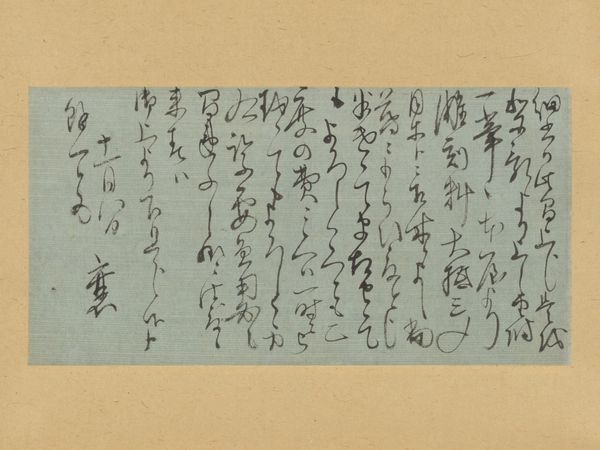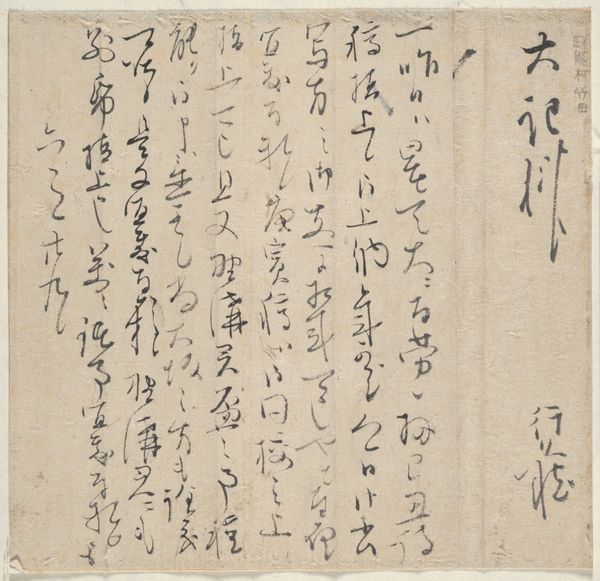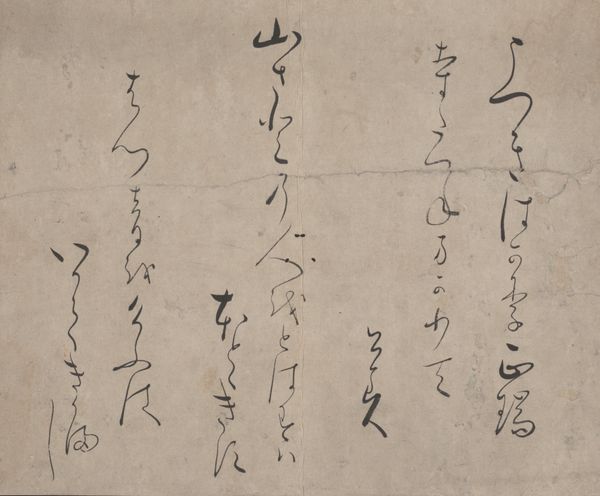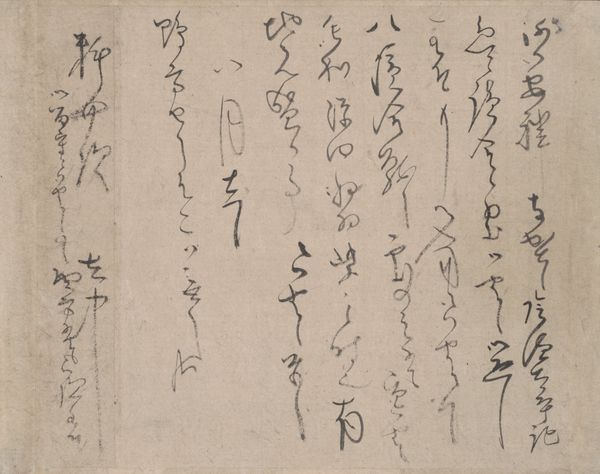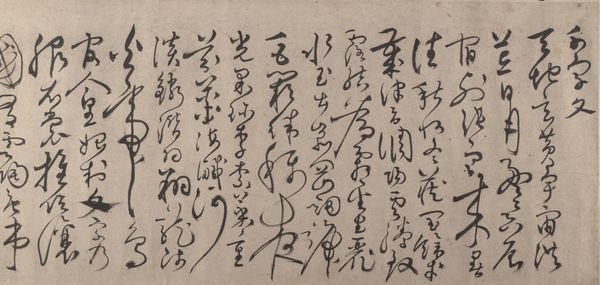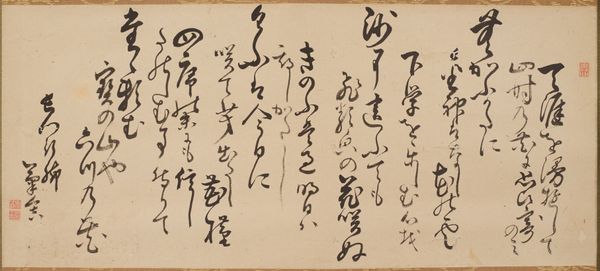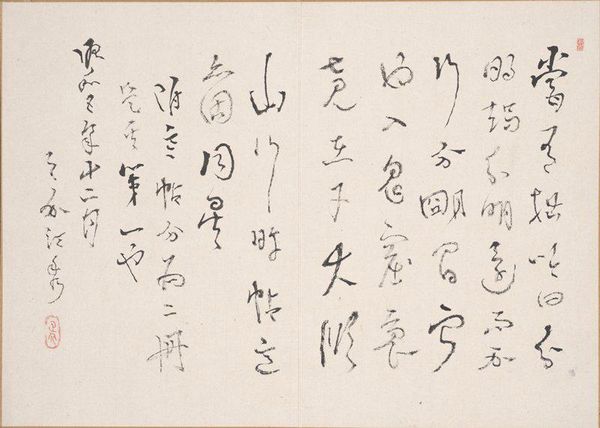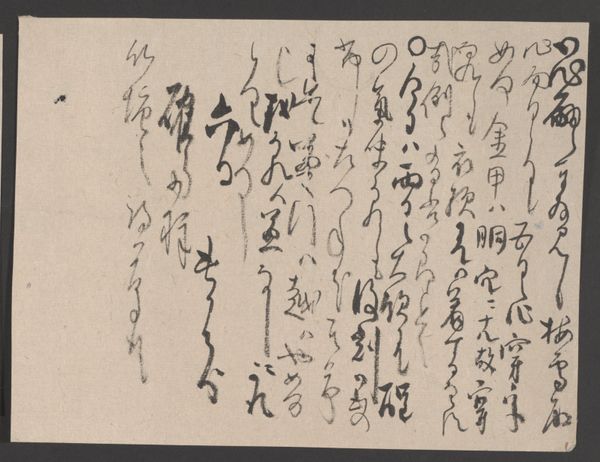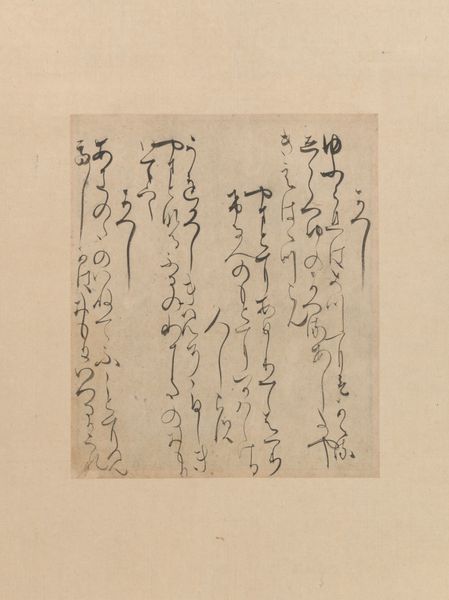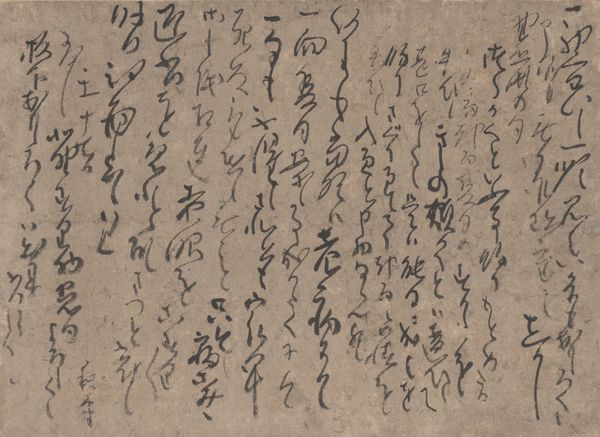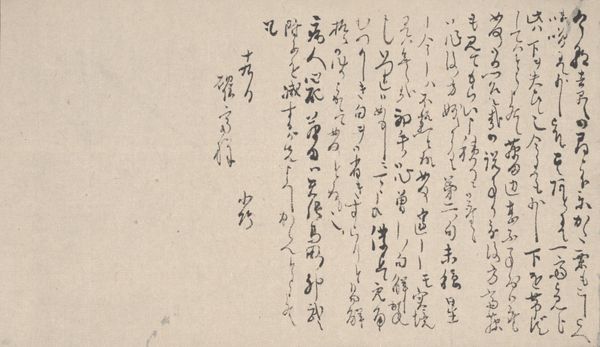
drawing, paper, hanging-scroll, ink
#
drawing
#
asian-art
#
japan
#
paper
#
hanging-scroll
#
ink
#
abstraction
#
calligraphy
Dimensions: 6 1/4 × 17 3/8 in. (15.88 × 44.13 cm) (image)41 3/16 × 24 1/8 in. (104.62 × 61.28 cm) (without roller)
Copyright: Public Domain
This letter to Tomioka Tessai was created with ink on paper by Ōtagaki Rengetsu in Japan, but we can't know exactly when. Rengetsu, a Buddhist nun and artist, lived through a time of great social and political change in Japan. From the late Edo to the early Meiji period Japan went through rapid modernization and Westernization. The old feudal system was dismantled and the new government promoted nationalism and emperor worship. Against this backdrop of modernization and nationalism, Rengetsu, with her individualistic art, challenged conventional artistic norms and expectations. In this letter, we see Rengetsu's distinctive calligraphy, which is characterized by its fluid brushwork and expressive quality. She was known for her poetry and calligraphy, often combining the two in her artwork. Her work gives us insights into the spiritual and artistic practices of 19th-century Japan. To understand this letter better, we can look into the social history of women artists in Japan, the influence of Buddhism on Japanese art, and the cultural context of letter writing. By understanding this work we understand more about the role of art and artists in Japanese society.
Comments
minneapolisinstituteofart almost 2 years ago
⋮
Open, rounded forms are characteristic of Rengetsu's style. Chinese characters (kanji) and Japanese syllables (kana) flow rapidly, mostly without lifting the brush. A Buddhist nun, Rengetsu has become a popular figure in the West—she lived through tragedy, losing two husbands and a child, and supported herself by making pottery and calligraphy. This letter, written in a free, informal style, is addressed to her friend, the painter Tomioka Tessai (1836–1924), who was becoming the most successful literati painter in Kyoto at that time. “I imagine that you are very busy, but please paint for me on these five sheets of paper. I’m really sorry for the small amount of reward you will receive but I hope you can grant my request. Please paint bamboo and pine on the marked sheets, and kinuta [fulling blocks, or mallets, for pounding cloth] on the two that are unmarked. I will visit before long and talk with you; that's all for now.For Tomioka-sama, Rengetsu”
Join the conversation
Join millions of artists and users on Artera today and experience the ultimate creative platform.
